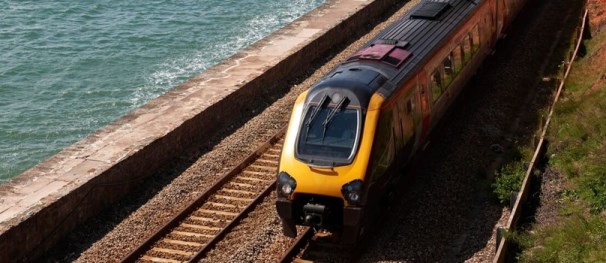The first shipment of a new long-length coated rail product for use in extremely corrosive railway environments, such as tunnels, where stray currents may exist, was recently delivered by British Steel (London, United Kingdom), which designed, developed, and manufactured the rail at its Scunthorpe plant in England.
The company supplied 108-m lengths of the product, known as Zinoco, to U.K. infrastructure group Network Rail (London, United Kingdom) for use in the Patchway tunnels on the Great Western railway, located near the suburbs of Bristol in Southwest England.
Network Rail, which successfully installed the product in late 2016, says the installation was part of the biggest investment on the route since it was built more than 150 years ago.
"[It] offers superior corrosion protection, and we are now delighted to be supplying this in longer lengths," says Peter Smith, managing director of British Steel's rail business.
“It is the perfect product for track environments such as those in the Patchway tunnels,” he adds. “They are not the driest and have historically suffered from rail corrosion, requiring expensive and disruptive rail replacement to keep traffic on the move.”
The product was developed in direct response to Network Rail’s requirement for more durable corrosion protection.1 It is designed for use in harsh environments such as coastal lines, wet tunnels, level crossings, mineral lines, and salt pans where corrosion determines rail life.

How it Works
Traditional rail coatings provide a barrier to corrosion pitting by preventing air, water, and salts from coming into contact with the steel rail.
Company officials say the most critical element of the coated rail is that it provides a second layer of defense through cathodic protection, even if areas of the coating have been breached.
When the zinc-rich outer coating comes in contact in an electrolyte such as salt water, a galvanic cell is formed. The zinc, which is anodic to steel, becomes a sacrificial anode and corrodes preferentially and protects the steel rail.
At any areas of coating damage, the steel cathode surface becomes negatively charged with electrons. The zinc coating, which has a voltage difference with respect to the corroding steel, will discharge positive current that flows through the environment to the steel and protects it from corrosion. The zinc oxide creates a strong barrier against further corrosion, the company explains. “In this way, the protection of the metal is guaranteed, even if the zinc layer is slightly damaged.”
Application Process
The coating is treated with a thermally sprayed, zinc-rich alloy—and it can be applied to rails of any grade.
The coating is applied to the web and around the foot of each rail, while the ends of each rail are usually left uncoated to facilitate installation welding. According to the manufacturer, rails using the coating are fully weldable through both flashbutt and aluminothermic welding processes.
The company also suggests the use of a corrosion-resistant fastening system as a complementary measure to address track corrosion.
Rail Testing
The product has been observed through both laboratory and track tests, according to the company, which notes that results to date indicate the sacrificial protection it offers is projected to extend rail life by between three and 10 times. This means lower maintenance costs and increased track availability, which are major benefits to maintainer operators and passengers.
So far, the product is fully approved for use on tracks by Network Rail, London Underground, and RATP (Paris, France).
In the coming months, the product will be installed in Barnet Tunnel, close to Kings Cross, and contracts have also been secured with RATP in France and with Iarnród Éireann in Ireland, says John Austin, network rail account manager at British Steel.
For now, though, the Patchway tunnels are the world’s only track to use the coated rail. The rails were delivered on time, the company notes, with a technical team present to support the installation.
So far, the results appear promising.
Source: British Steel, britishsteel.co.uk. Contact John Austin, British Steel—e-mail: rail@longssteel.com.
Reference
1 “British Steel delivers world first with revolutionary long-length coated rail,” British Steel News & Events, Nov. 28, 2016. http://britishsteel.co.uk/news-events/british-steel-delivers-worlds-first-long-length-coated-rail/ (January 12, 2017).